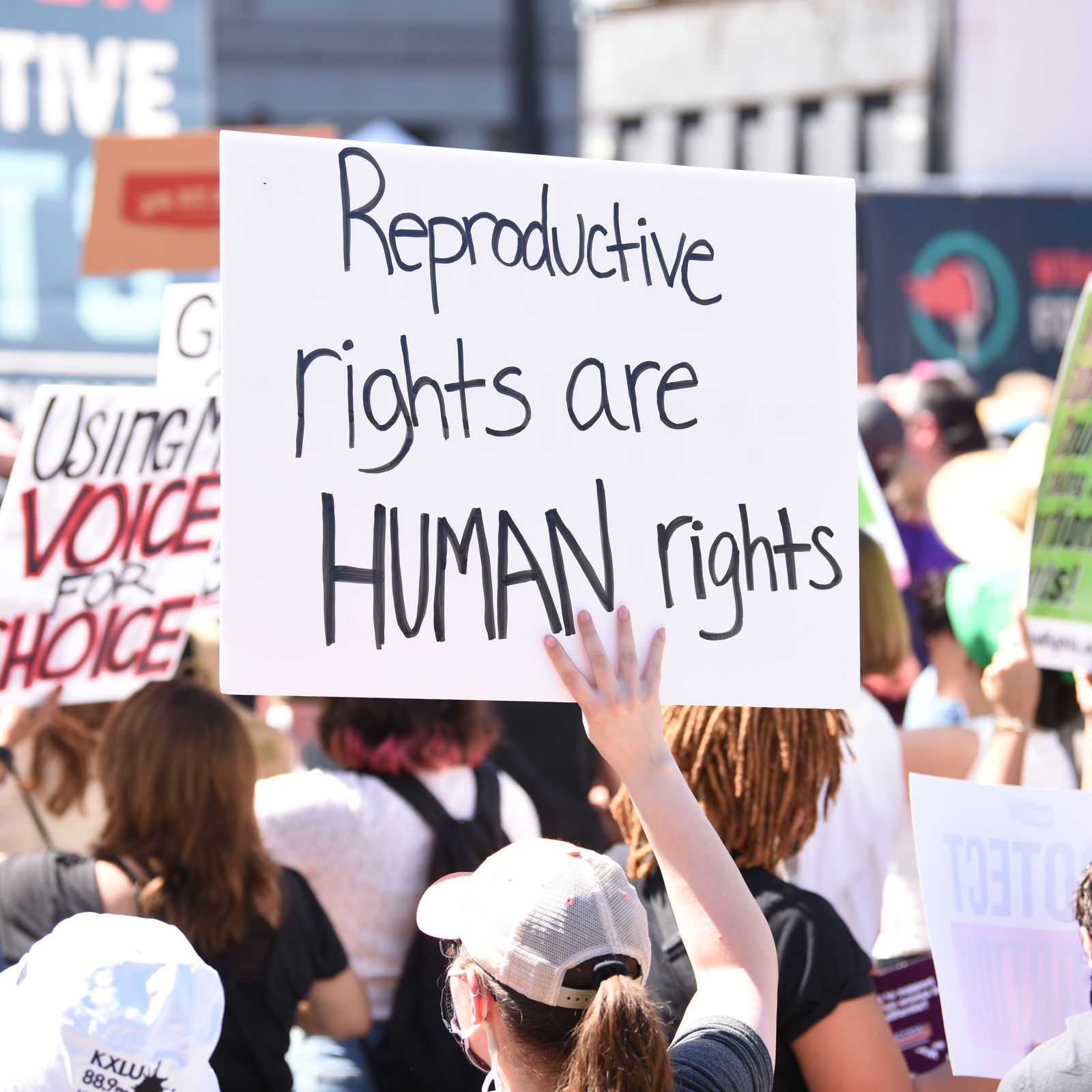Author: Vishwjeet Kumar Choudhary, Assam University, Silchar
Abstract
Reproductive rights represent a crucial intersection of healthcare, autonomy, and human rights, encompassing the ability to access contraception, safe and legal abortion, family planning, and maternal healthcare. These rights are essential for individuals to make informed decisions about their reproductive health, free from coercion, violence, and discrimination. Recent years have witnessed significant legal developments in the realm of reproductive rights, with landmark cases and legislative changes that reflect shifting societal values, cultural norms, and political ideologies.
This article delves into the latest global updates in reproductive rights law, analyzing high-profile court rulings, legislative reforms, and social movements that have propelled these rights into public discourse. Notable developments include the U.S. Supreme Court’s decision in Dobbs v. Jackson Women’s Health Organization, which dismantled federal protections for abortion established by Roe v. Wade, thus enabling individual states to impose their own regulations. Conversely, in countries such as Ireland, progressive legal reforms have expanded reproductive access following public referendums and judicial reviews, showcasing how legal structures adapt to evolving public consensus.
Furthermore, this article examines the implications of these legal shifts, particularly how they impact marginalized communities that face heightened barriers to accessing reproductive healthcare. The convergence of law and social justice is evident in the reproductive rights movement, with international bodies and human rights organizations playing a growing role in advocating for these rights globally. While some regions have advanced reproductive freedoms, others have imposed restrictions, sparking debates on bodily autonomy, public health, and individual rights.
By evaluating key case law and exploring possible future directions, this article aims to provide a comprehensive overview of the current landscape of reproductive rights law. It seeks to clarify how different legal frameworks either support or restrict these rights, as well as the role of international law, technological advancements, and intersectional advocacy in shaping future reproductive policies. Through this exploration, the article underscores the importance of safeguarding reproductive rights as a fundamental aspect of human dignity and social equity.
To the Point
Scope: Recent developments in reproductive rights, both expanding and restricting, highlight how laws shape and respond to societal values.
Key Areas: Focus on access to contraception, abortion rights, and maternal healthcare.
Jurisdictions Covered: Major rulings and legal changes in countries like the United States, Ireland, Poland, and India.
Use of Legal Jargon
Right to Privacy: Often argued as a foundation for reproductive rights, particularly in abortion cases.
Bodily Autonomy: The right of individuals to make decisions over their own bodies, crucial in reproductive rights cases.
Precedent: The reliance on previous court decisions to determine the outcomes of current cases.
Judicial Activism: Refers to court actions that are perceived as creating new policy or rights through judicial interpretation.
The Proof
In recent years, reproductive rights laws have seen drastic shifts worldwide, with countries implementing both expansions and restrictions that reflect changing social, political, and legal climates. Below are specific data points, cases, and examples that highlight how recent decisions and legislation are reshaping reproductive rights.
Key Sections of the Article:
A) Historical Overview and Key Developments in Reproductive Rights Law
Begin with an overview of the legal history of reproductive rights, touching on major precedents like Roe v. Wade (U.S.) and the European Court of Human Rights rulings that have shaped the understanding of reproductive autonomy globally. Briefly mention how laws have historically restricted or expanded reproductive rights in various jurisdictions.
B) Recent Developments Worldwide
Discuss recent changes in reproductive rights laws in different countries, analysing the contrasting approaches taken globally:
1. United States: Overturning of Roe v. Wade and the State-Level Impact
Case: Dobbs v. Jackson Women’s Health Organization (2022)
The U.S. Supreme Court’s decision in Dobbs fundamentally altered reproductive rights in the United States by overturning Roe v. Wade (1973), which had guaranteed the constitutional right to abortion for nearly 50 years. Following this decision, each state gained the authority to set its own abortion laws, leading to a polarized legal landscape.
Data Points:
Within a year of the Dobbs decision, over a dozen U.S. states enacted near-total abortion bans, significantly reducing access across the country.
According to the Guttmacher Institute, nearly one in three American women of reproductive age live in a state where abortion is either restricted or banned.
The decision has led to a rise in interstate travel for abortion services, with some states experiencing an influx of patients from neighboring regions with stricter laws.
Impact: The Dobbs ruling has highlighted significant disparities in reproductive healthcare, with women in restrictive states facing increased health risks, economic burdens, and delays in care. Furthermore, the ruling has ignited debates on privacy rights, bodily autonomy, and the influence of judicial decisions on deeply personal matters.
2. Ireland: Legalization of Abortion Following the Repeal of the Eighth Amendment
Case: Repeal of the Eighth Amendment (2018)
After decades of strict anti-abortion laws, Ireland voted in a historic 2018 referendum to repeal the Eighth Amendment of its Constitution, which had equated the right to life of the fetus with that of the mother. This repeal paved the way for the legalization of abortion up to 12 weeks of pregnancy and in specific circumstances thereafter.
Data Points:
In the referendum, 66.4% of Irish voters favored repealing the amendment, demonstrating broad public support for abortion access.
Since the legalization, over 6,000 women annually have accessed safe and legal abortion services in Ireland, according to the Irish Department of Health.
Before the repeal, thousands of women traveled abroad, primarily to the UK, to obtain abortion services, often at great personal and financial cost.
Impact: Ireland’s shift represents a major transformation in reproductive rights in a traditionally conservative country. The repeal not only made abortion accessible domestically but also underscored the importance of legislative alignment with public opinion and women’s healthcare needs. This move has inspired other countries to reevaluate restrictive abortion laws.
3. Poland: Constitutional Tribunal’s 2020 Ruling on Fetal Abnormalities
Case: Poland’s Constitutional Tribunal Ruling (2020)
In 2020, Poland’s Constitutional Tribunal declared that abortion due to fetal abnormalities was unconstitutional, effectively banning most abortion procedures in the country. This ruling severely limited reproductive rights, as fetal abnormalities had been the reason for approximately 98% of legal abortions in Poland.
Data Points:
Following the ruling, the number of legal abortions in Poland plummeted. In 2021, the Federation for Women and Family Planning estimated that only a few dozen legal abortions occurred, compared to around 1,100 the previous year.
Human rights groups estimate that thousands of Polish women now travel to other European countries for abortion services, with some relying on underground networks or self-administered procedures.
Massive protests erupted across Poland, with tens of thousands of citizens demanding the reversal of the ruling and calling for greater reproductive freedom.
Impact: This decision illustrates how legal rulings can drastically curtail reproductive healthcare access and impose hardships on women, particularly those from lower socioeconomic backgrounds who may lack the resources to seek care abroad. The ruling has drawn widespread criticism from the European Union and human rights organizations, highlighting Poland’s divergence from international human rights standards on reproductive autonomy.
4. India: Expanded Access through the Medical Termination of Pregnancy (Amendment) Act, 2021
Legislation: Medical Termination of Pregnancy (MTP) Amendment Act, 2021
In 2021, India expanded its abortion law by amending the Medical Termination of Pregnancy Act, allowing abortion up to 24 weeks in specific cases, such as rape, incest, and fetal abnormalities, and up to 20 weeks for all women. Previously, the limit was 20 weeks, with few exceptions.
Data Points:
The amendment now enables unmarried women to access abortion services under the same terms as married women, reflecting India’s progressive stance on reproductive rights.
According to India’s Ministry of Health and Family Welfare, there are an estimated 15.6 million abortions annually in the country, underscoring the necessity of accessible and safe procedures.
The change aligns with India’s commitment to reducing maternal mortality, as unsafe abortions contribute significantly to maternal deaths.
Impact: The MTP Amendment Act signifies a shift toward inclusive reproductive rights, extending protections to a broader range of women and circumstances. India’s approach emphasizes the importance of equitable healthcare access and aligns with global public health objectives.
5. Technological Advances and the Rise of Telemedicine Abortion Services
Example: Telemedicine for Abortion in the UK during COVID-19
During the COVID-19 pandemic, the UK adopted a telemedicine model for early medical abortion, allowing women to access abortion pills via mail without an in-person visit. This change enabled women to receive care safely at home, reducing barriers caused by lockdowns and travel restrictions.
Data Points:
A study by the British Pregnancy Advisory Service found that the telemedicine model led to more timely abortions, with an increase in patients obtaining care within the first trimester.
The UK government subsequently made the telemedicine option permanent in 2022, citing patient safety and accessibility benefits.
Impact: Telemedicine has emerged as a critical tool for maintaining abortion access, especially in areas where physical access to clinics is limited or politically restricted. This model has set a precedent for other countries considering telehealth as a viable means to expand reproductive rights.
3. Case Laws
Provide a detailed look into significant cases that have influenced reproductive rights:
Roe v. Wade (1973): Former U.S. Supreme Court case that recognized the right to choose abortion under the right to privacy.
Dobbs v. Jackson Women’s Health Organization (2022): U.S. Supreme Court decision that overturned Roe v. Wade, giving individual states the authority to regulate abortion.
Whole Woman’s Health v. Hellerstedt (2016): A case that struck down restrictive Texas abortion laws and upheld the undue burden standard.
X Case (Ireland): A 1992 case that recognized the risk of suicide as a legal ground for abortion in Ireland, influencing later legislation.
Puttaswamy v. Union of India (2017): Indian Supreme Court decision that reaffirmed the right to privacy, indirectly supporting reproductive autonomy.
4. Future Directions for Reproductive Rights Law
Explore potential directions for reproductive rights, including:
Technology and Access: Telemedicine’s role in providing access to contraception and abortion in restrictive regions.
International Human Rights: How international bodies like the United Nations may influence reproductive rights, especially in countries with restrictive policies.
Intersectionality: Addressing reproductive justice for marginalized groups who face higher barriers to accessing reproductive healthcare.
Conclusion
Summarize the pressing need to address reproductive rights within the context of human rights and healthcare equity. Emphasize that while recent rulings and legislative actions have polarized reproductive rights globally, ongoing advocacy and legal challenges continue to shape the landscape.
FAQS
1. Why are reproductive rights considered human rights?
Reproductive rights are fundamental to individual autonomy, bodily integrity, and privacy, all of which are recognized as core human rights in international legal frameworks.
2. How does the right to privacy influence reproductive rights?
The right to privacy underpins many reproductive rights cases, as it allows individuals to make personal health decisions without government interference.
3. How does judicial activism play a role in reproductive rights?
Judicial activism has played a significant role in expanding or restricting reproductive rights, as seen in cases where courts interpret constitutional rights to address reproductive issues.
4. How does international law impact national reproductive rights?
International human rights agreements can exert pressure on countries to uphold reproductive rights, but enforcement depends on each country’s legal framework and willingness to adhere to these standards.




